Dark fluid oozing from bark and running down the tree trunk is a symptom referred to as stem bleeding or ‘bleeding canker’. It is most frequently caused by biotic agents, and in Britain a number of different pests and pathogens are known to induce this general symptom on oak. Occasionally abiotic causes such as drought stress can also be responsible for the bleeding. Although there are subtle differences in the position, severity and extent of bleeding which may enable the cause of the bleeding to be identified just by looking at it, this is not easy.
In general bark samples have to be taken from the affected tree so that the causal agent can be diagnosed in a laboratory by and expert.
Phytophthora is a well known pathogen able to cause stem bleeding on oak as well as many other tree species. For example in Britain, Phytophthora citricola, P. cinnamomi and P. cambivora attack various species of oak, mainly causing bleeding on the trunk up to 1 to 2 m above ground level. When diseased bleeding bark is pared away, in most cases the lesions are seen to link with root or tree collar infections.
More information on Phytophthora diseases of trees.
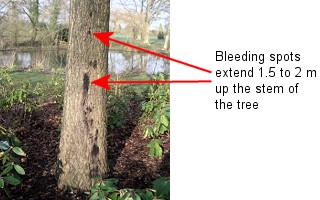
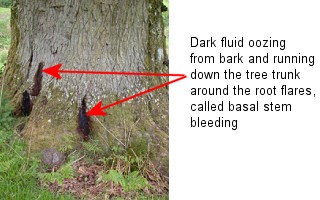
Sometimes concern is expressed that Phytophthora ramorum (cause of Sudden Oak Death in the USA) could be causing stem bleeding on oak in Britain, but the likelihood of this is very low. P. ramorum has not yet been found on native English oak (Q. robur) in Britain although it has been found on a single sessile oak (Q. petraea) (see photos below) and a southern red oak (Q. falcata) in England. In continental Europe P. ramorum has infected a few red oaks (Q. rubra) causing bleeding stem cankers.
Generally native oaks in Britain are not susceptible to ‘Sudden Oak Death’. Also, for P. ramorum to attack oak (or any tree) locally it needs to build up on nearby rhododendron and cause heavy leaf infection from which many spores are produced. The spores then have to be wind or rain-blown onto the bark of nearby trees, before infection can occur through intact tree bark. An absence of heavily infected rhododendron almost certainly implies that bleeding on any tree is not caused by P. ramorum. Indeed most P. ramorum infected trees in Britain are only a few metres (5 to 10 m) away from the source of spores.
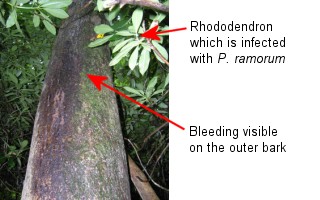
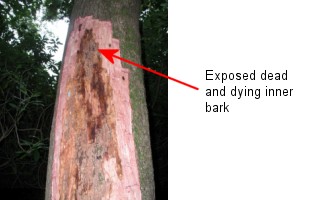
More information on P. ramorum and Phytophthora diseases of trees.
For more information on the management of P. ramorum or see the following publication:
Buprestid beetles have also been associated with stem bleeding in mainland Europe. Similar symptoms occur in Britain and are currently being investigated in relation to Acute Oak Decline.
Over the past two years there have been an increasing number of cases of oaks with prominent bleeding on their stems reported to us from locations in southern and central England. The symptoms are characteristic; longitudinal splits of about 8 to10 cm occur in the stem bark and a dark fluid (bleeding) often oozes profusely from these splits which occur all around the tree stem and extend high into the branches.
Forest Research scientists have been looking at a number of the affected trees in more detail over the last 5 months and it appears that the causal agent is not a Phytophthora (or other species of fungus) but bacteria. Over the next few months we hope to be able to provide more information about the identity of the agents, the extent of the damage caused, and whether this may be exacerbated by period of drought.
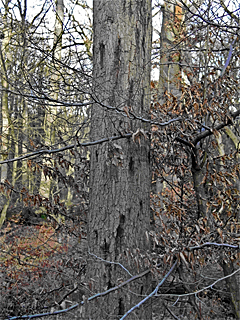
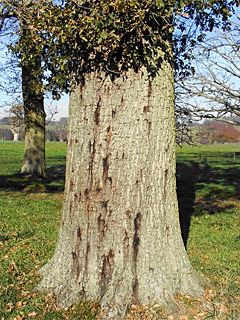
Recent examples of bleeding on woodland and parkland oaks possibly caused by bacteria
For more information on the management of extensive stem bleeding on oak.